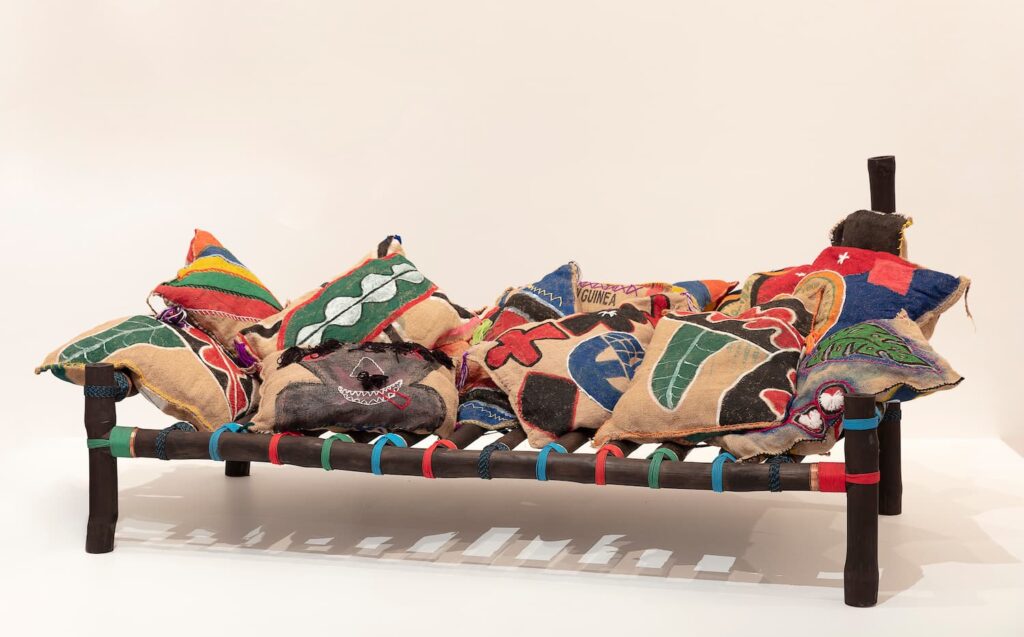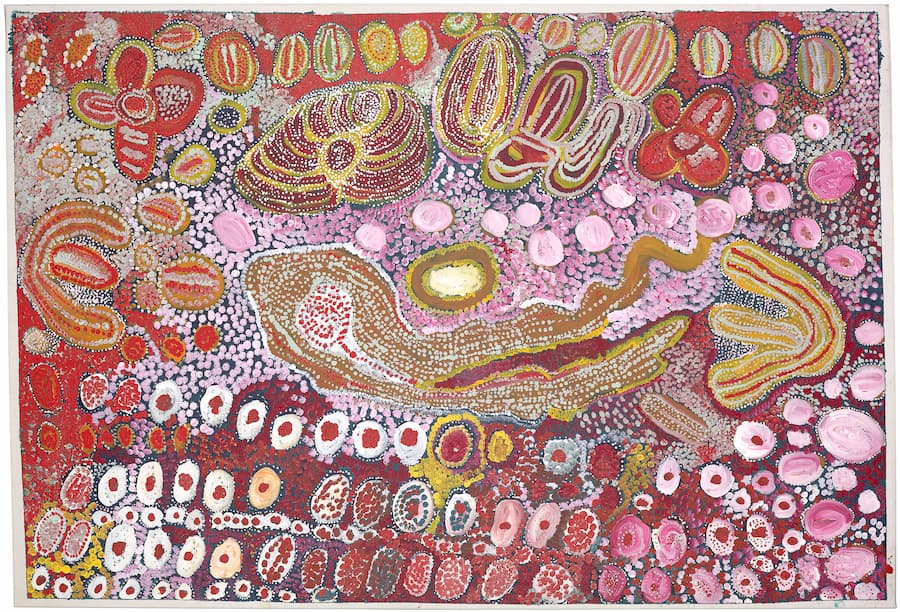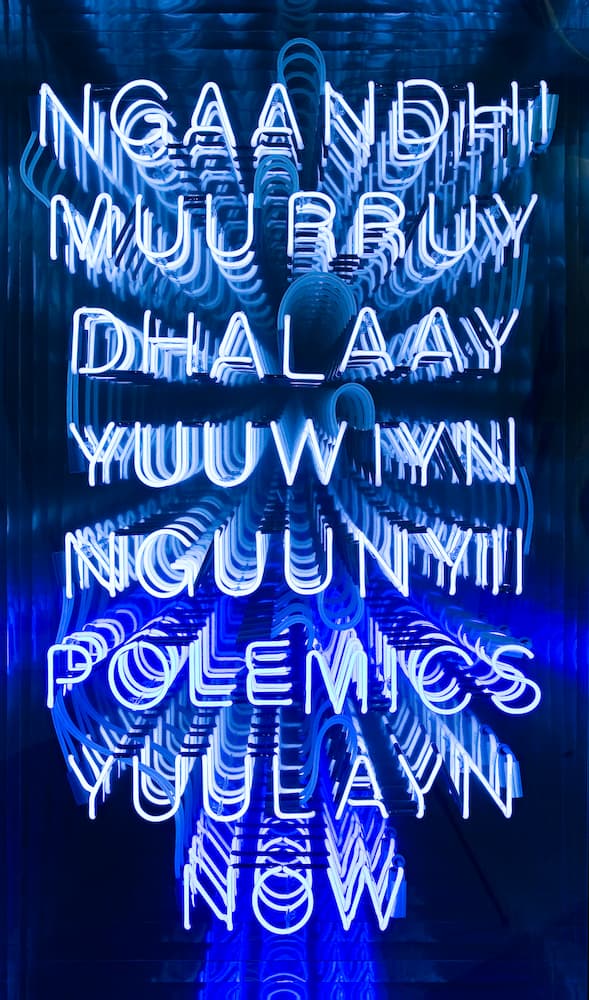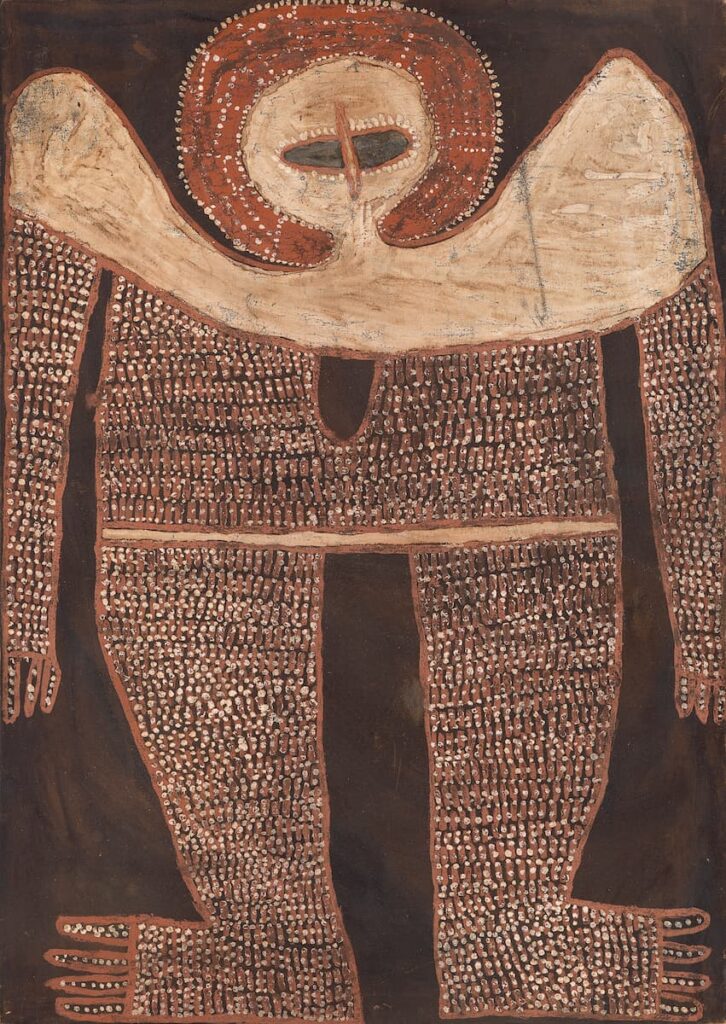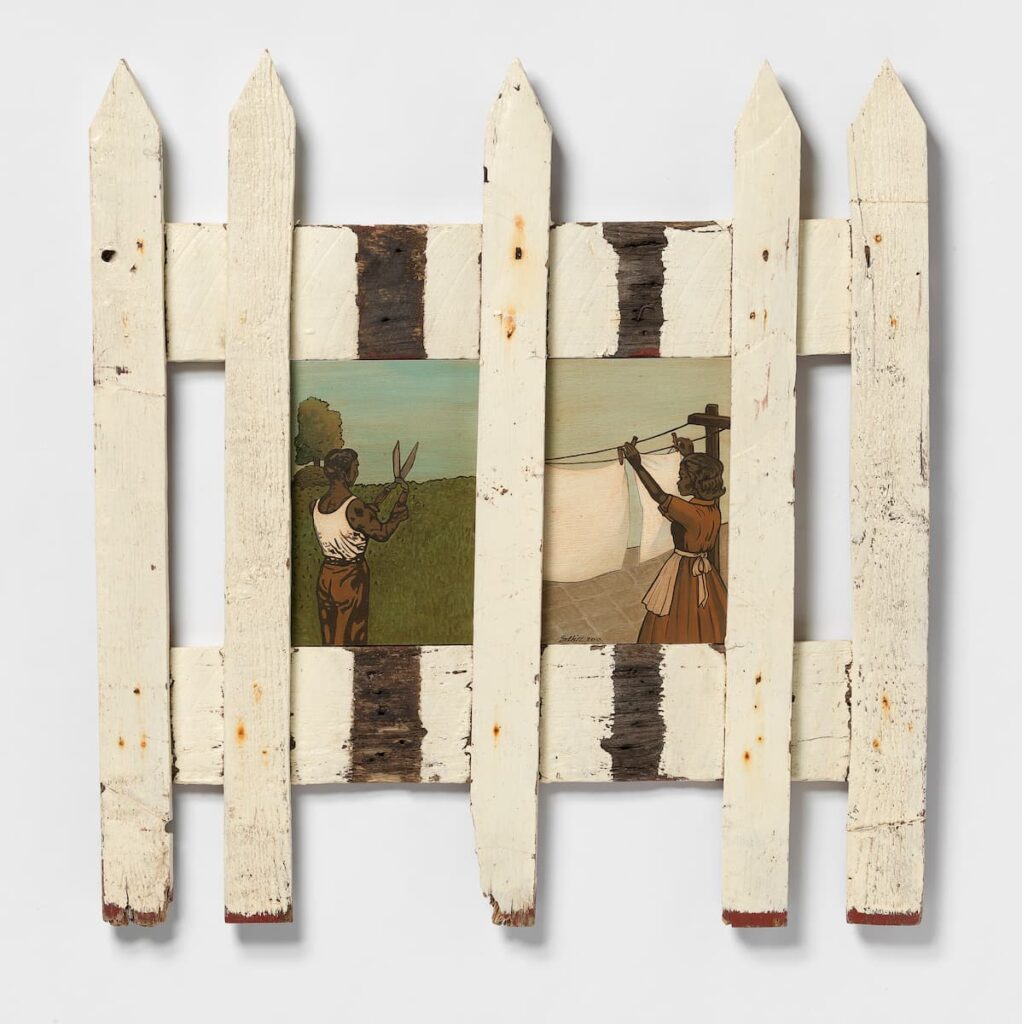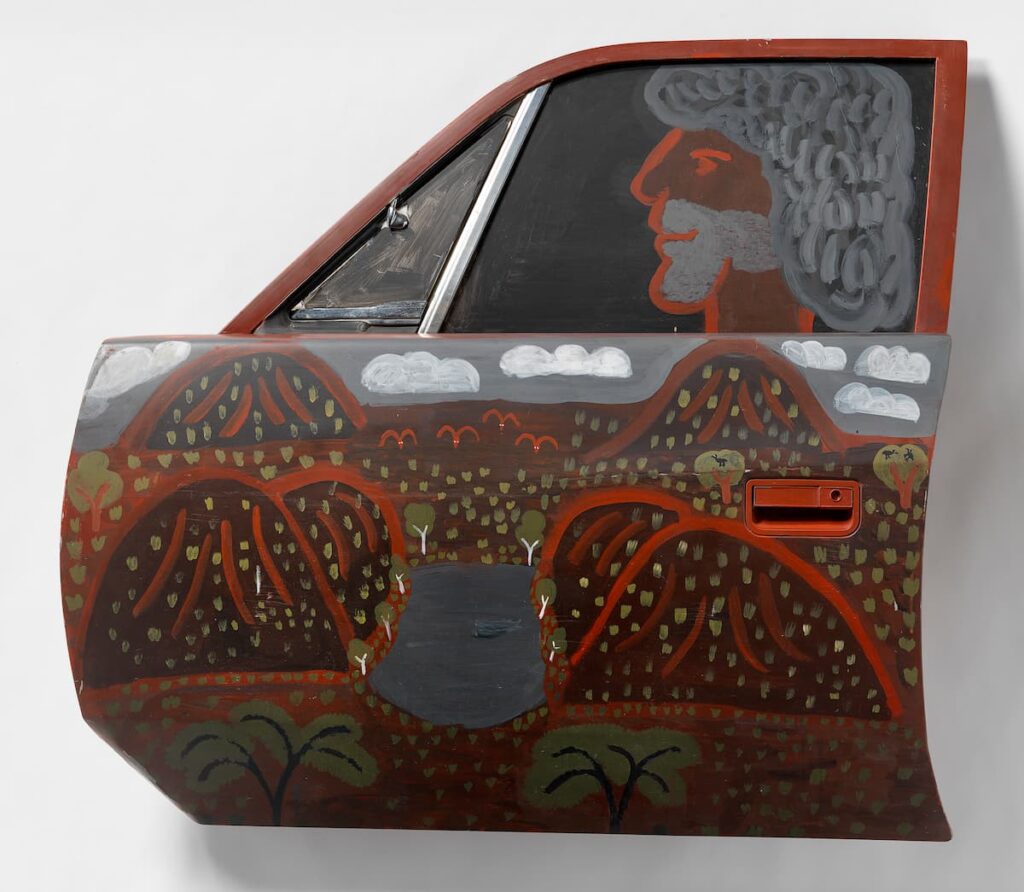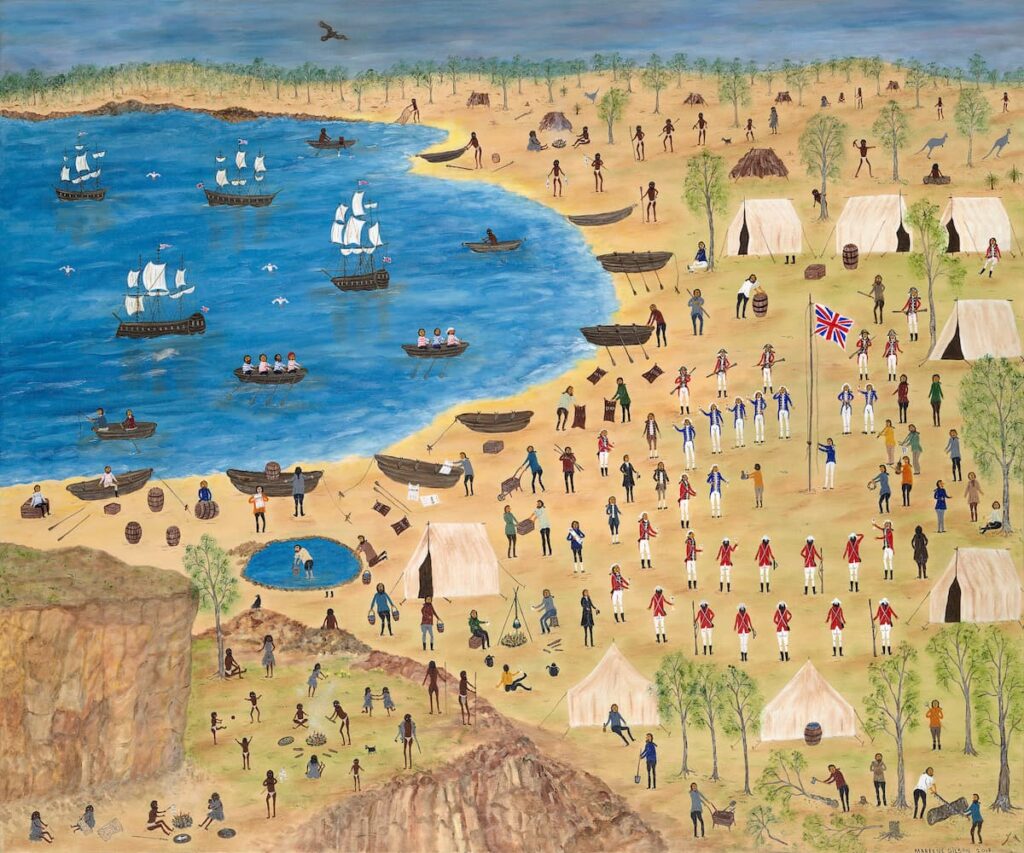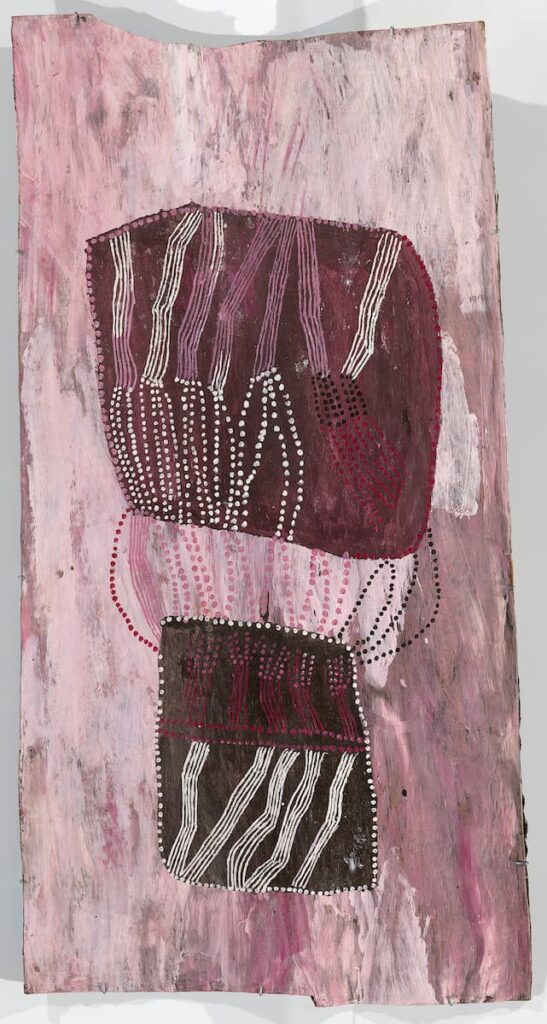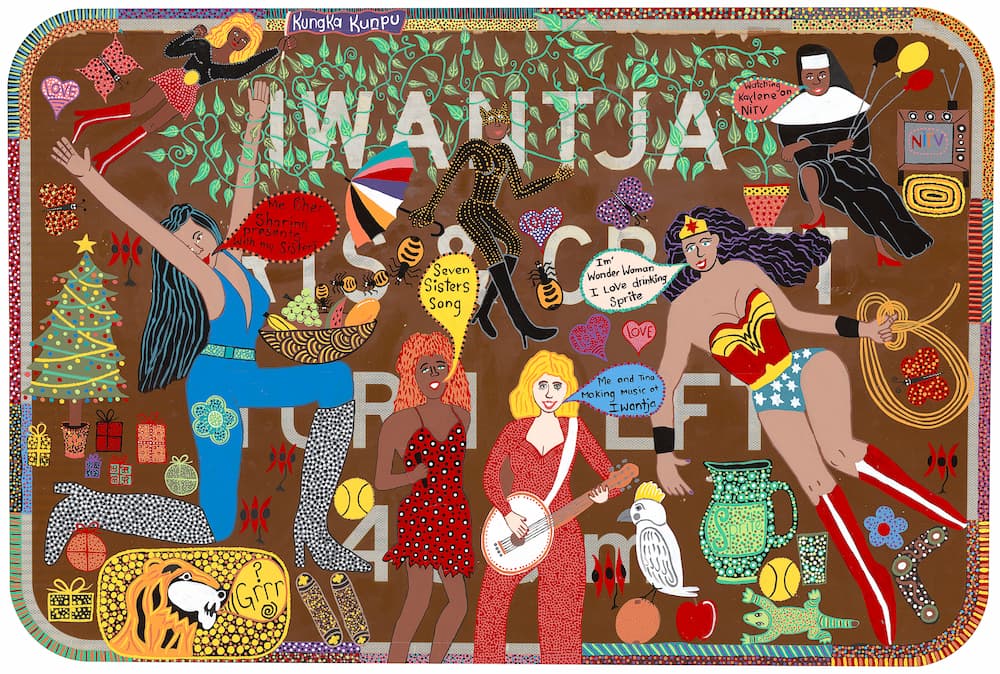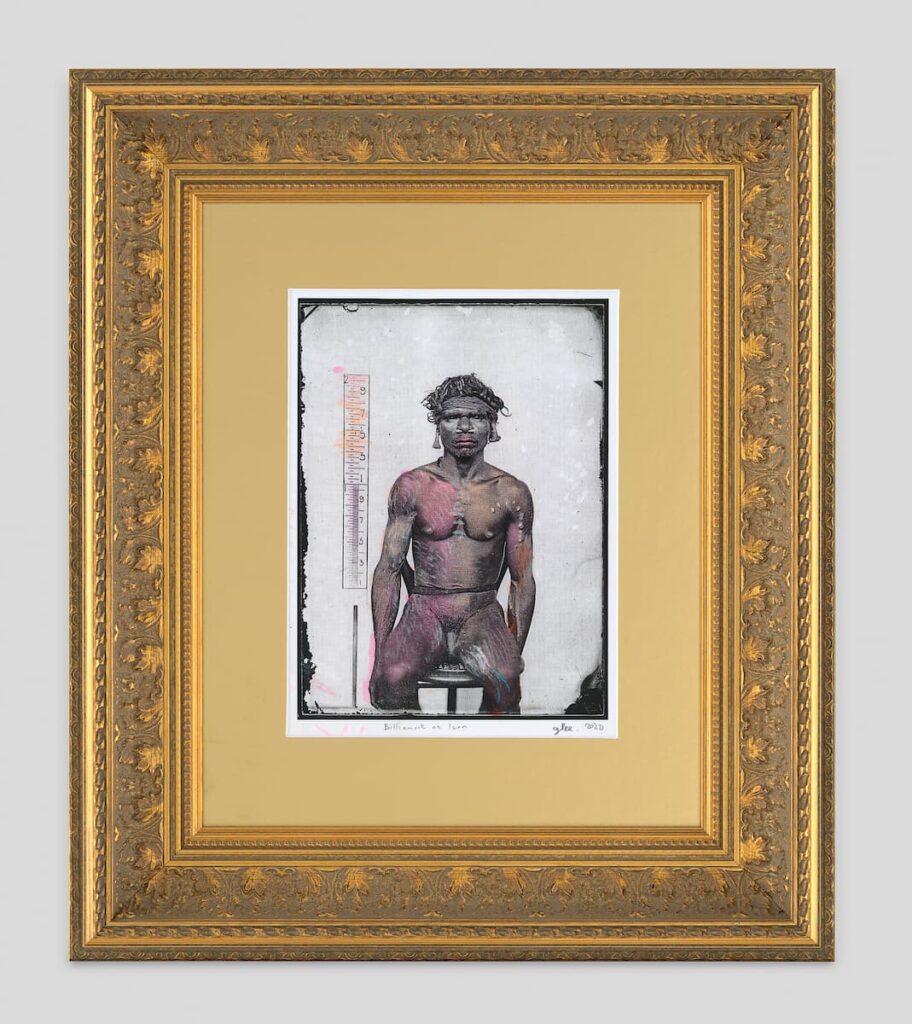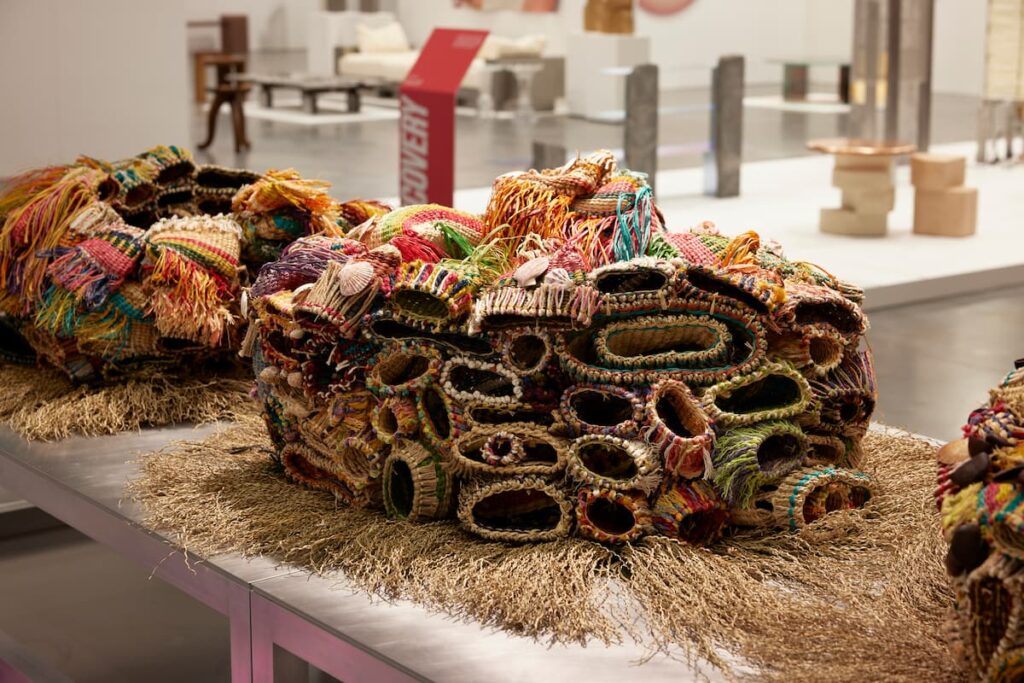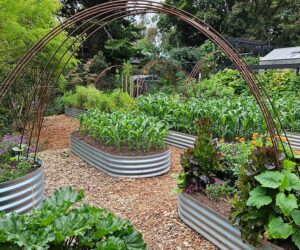New First Nations Exhibition at NGV Australia: Wurrdha Marra
From October, the ground floor of The Ian Potter Centre: NGV Australia, Fed Square will be home to Wurrdha Marra, a new dynamic and ever-changing exhibition space dedicated to displaying masterpieces and new works from the NGV’s First Nations art and design collection.
Wurrdha Marra means ‘Many Mobs’ in the Wurundjeri Woi Wurrung language and is the name newly bestowed upon this gallery space by the Wurundjeri Council.
Wurrdha Marra showcases work from emerging to senior artists from different time periods and regions, including Tony Albert, Treahna Hamm, Kent Morris, Marlene Gilson, Rover Thomas, Christian Thompson, Gary Lee, Nicole Monks, Gali Yalkarriwuy, Dhambit Mununggurr, Nonggirrnga Marawili and more.
Traversing the ground floor and foyer of The Ian Potter Centre: NGV Australia, Wurrdha Marra includes a number of new and never-before-shown works across a vast array of media. Wurrdha Marra celebrates the diversity of First Nations art and design through a series of visual dialogues and juxtapositions from many Aboriginal and Torres Strait Islander Communities around the Country.
Highlights include a large-scale display of ten an-gujechiya (fish traps) produced by Burrara women from Maningrida. These objects are meticulously crafted over several weeks using mirlarl vine sourced from the bush. The vine is soaked to soften it before being woven into rings, forming the trap’s conical shape. Weaving styles are often passed down from generation to generation, or from senior artist to apprentice, with each weaver adding their own personal touch and interpretation to the craft. In this way, weaving is both a powerful tool for self-expression as well as a sustainable practice of cultural preservation.
Also on display is a new collection of contemporary resin boomerangs by Keemon Williams, a First Nations queer artist from Meanjin/Brisbane with Koa, Kuku Yalanji and Meriam Mir heritage. Each of Williams’ works has been decorated with a description word, offering a tongue-in-cheek parallel between different facets of identity. From ‘intersex’ to ‘limp wrist’, ‘endarkened’ and ‘off-white’, Williams uses text to draw attention to the intersectional experiences of queer and First Nations people.
Another never-before-shown work is History Repeats, 2023, by Girramay/Yidinji/Kuku Yalanji contemporary artist Tony Albert. The work is made of found materials drawn from the artist’s vast collection of what he terms ‘Aboriginalia’. These objects are linked by their appropriation and depictions of Aboriginal and Torres Strait Islander people on mass produced objects such as tea towels, magnets, ashtrays, mugs and more. History Repeats is part of the artist’s ongoing interrogation into this sort of material and how it can be used to reframe to Indigenous histories within a contemporary art context.
The exhibition also features the the painting Ngiya Murrakupupuni (My Country), 2023 by Tiwi artist Michelle Pulutuwayu Woody Minnipinni. The monumental work is painted using a pwoja (Tiwi comb) and celebrates the Tiwi ochres of red, yellow and white – all gathered on the artist’s home Country.
To produce this work, the artist applied delicate horizontal lines of white dots on red, red pwoja markings on yellow and white dots on red, conceptualising the terrain and expressing her connection to place.
The vibrant painting Mijal, 2021-22 by Gwenneth Blitner, also on display for the first time, explores the artist’s memories of camping and collecting bush tucker along the hills on one side of the Roper River as a child with her family. Blitner uses bright colours to showcase the floral blooms springing up from hills, which she boldly outlines using dark tones. A place of deep cultural significance, the Roper River is symbolised by the dappled blue gradient at the base of the painting.
In Guruwuy Murrinyina’s elegant bark painting Dhatam, 2023 the artist evokes the symbolic and spiritual power of Wititj (the Rainbow Serpent) and his companion Djaykung (the Javanese file snake) through twisting lines in red, white and green ochre. The title of the work, Dhatam, refers to plants that grow at Garrimala – a billabong near Gängan and a sacred site for Guruwuy Murrinyina’s grandmother’s clan, the Gälpu people. The designs found within the leaves and forms of these plants are sacred and symbolise the power of the Ancestral serpent beings.
On display for the first time at NGV is the moving image work Scripture for a smoke screen: Episode 1 – dolphin house, 2022, by Bundjulung and Ngāpuhi artist Amrita Hepi. The work explores the NASA-backed experiment that attempted to teach dolphins to communicate with humans. Through the work, Hepi challenges societal definitions of intelligence and the standards of Western knowledge systems. The work invites reflection on fundamental questions like: What do we do when we don’t speak the same language? And how do we treat others when we don’t understand them?
Wurrdha Marra coincides with a complete rehang of the permanent collection on levels two and three of The Ian Potter Centre: NGV Australia, bringing together both Australian and First Nations art in a fully integrated manner for the very first time. Following a chronology that includes historical and contemporary First Nations art and design in every gallery – and with a commitment to increase representation – this display offers a journey through pivotal moments in Australian art history, from 65,000 years of First Peoples practices through to the present day.
Wurrdha Marra is on display from 12 October 2023 at The Ian Potter Centre: NGV Australia at Fed Square, Melbourne. Entry is FREE. Further information is available via the NGV website: NGV.MELBOURNE
